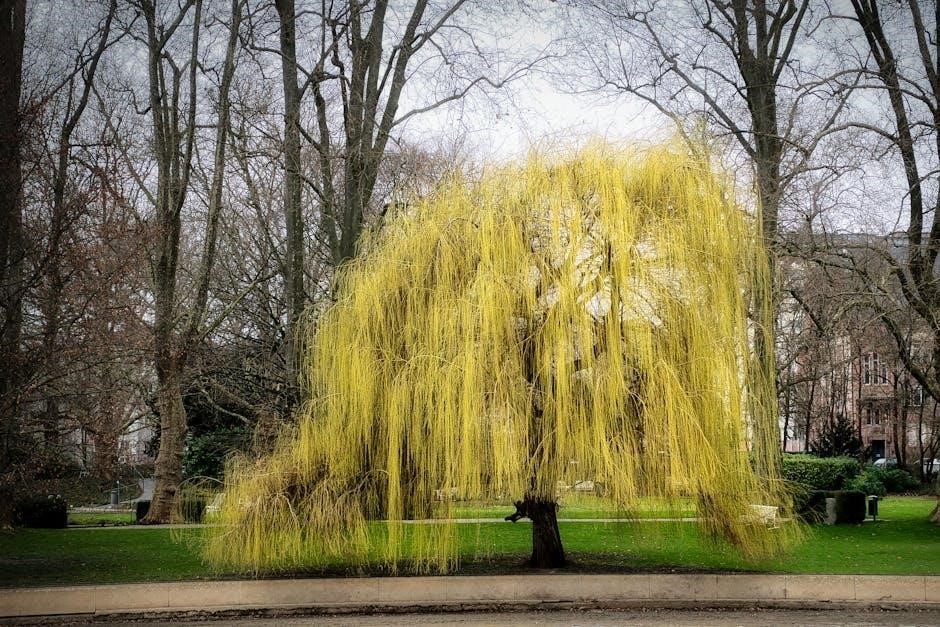
environmental and nature writing pdf
Environmental and nature writing explores our relationship with the natural world. It encompasses diverse genres, from poetry to non-fiction, offering guidance on writing across these forms. It inspires reflection and action to promote awareness of ecological issues.
Defining Environmental and Nature Writing
Defining environmental and nature writing involves understanding its scope and purpose. It encompasses writing that explores the relationship between humans and the environment. This writing can take many forms, including essays, poetry, fiction, and non-fiction. The key element is a focus on the natural world and our interactions with it. Environmental writing often addresses ecological issues and promotes awareness of environmental concerns. It aims to inspire positive action and a deeper connection with nature. Nature writing focuses on personal experiences and reflections in natural settings. Both forms share a common goal: to foster appreciation and understanding of the environment.
The History of Nature Writing
Nature writing has a rich history that spans centuries, with roots in ancient traditions. Early storytelling often included elements of the natural world, reflecting humanity’s deep connection to the environment.
Early Traditions and Influences
Early traditions of nature writing are deeply rooted in indigenous oral stories and mythologies. These narratives often reflected a profound connection to the natural world. They showcased the interconnectedness of humanity and the environment. These stories were passed down through generations, serving as a means of preserving knowledge and cultural values.
Ancient cultures also had a deep understanding of natural cycles and patterns. Early forms of writing often celebrated the beauty and power of nature, highlighting the importance of respecting and protecting it. These traditions laid the foundation for later nature writing.
The 19th-Century Expansion of Interest
The 19th century witnessed a surge of interest in the environment, marked by significant contributions across disciplines. Carl Sprengel introduced the Law of the Minimum, highlighting resource scarcity’s impact on economic growth. Ralph Waldo Emerson’s “Nature” in 1836 further spurred interest in nature. This period also saw the rise of natural history writing, with authors detailing observations and explorations of the natural world.
The concept of “carrying capacity” emerged, emphasizing the limits of ecosystems. These developments fostered a deeper understanding of humanity’s relationship with the environment. This era set the stage for modern environmental awareness.

Key Elements of Environmental Writing
Environmental writing hinges on portraying nature, exploring ecological issues, and reflecting on human-nature relationships. Eco-literature engages readers, fostering awareness and inspiring conscious action regarding our planet’s well-being.
Portrayal of the Natural World
The foundation of impactful environmental writing lies in its vivid and accurate portrayal of the natural world. This involves more than just listing species or describing landscapes; it requires capturing the essence of ecosystems, from the smallest microbe to the largest whale. The best writers use sensory details to immerse the reader in the environment, allowing them to experience the sights, sounds, smells, and textures of nature. This skillful depiction fosters a sense of connection and appreciation, vital for inspiring environmental stewardship. Descriptive accuracy ensures the reader understands the realities of the natural world.
Exploration of Ecological Issues
Environmental writing delves into ecological issues, examining the intricate web of life and the threats it faces. This involves exploring topics such as climate change, deforestation, pollution, and biodiversity loss. Writers investigate the causes and consequences of these issues, highlighting the impacts on both human societies and natural ecosystems. Through research and storytelling, they reveal the complexities of environmental challenges. Effective exploration involves scientific accuracy, ethical considerations, and a commitment to informing and engaging readers in the search for sustainable solutions. This exploration can lead to a greater awareness of the environmental issues.
Reflection on Human-Nature Relationships
Environmental and nature writing profoundly reflects on the complex relationships between humans and the natural world. It explores how human actions impact ecosystems and, conversely, how nature shapes human experiences and cultures. This reflection delves into the ethical dimensions of our interactions, questioning our responsibilities toward the environment; Writers contemplate the balance between human needs and ecological preservation, examining diverse perspectives, from indigenous knowledge to scientific understanding. Through personal essays, philosophical inquiries, and creative narratives, this writing fosters a deeper understanding of our place within the environment. It motivates readers to reconsider their values and actions, promoting a more sustainable coexistence.

Genres in Environmental and Nature Writing
Environmental and nature writing encompasses diverse genres. These include poetry, non-fiction, and fiction. Each offers unique perspectives on ecological issues and human-nature relationships, inspiring awareness and positive action through literary expression.
Poetry
Environmental poetry, or ecopoetry, expands our understanding of environmental writing. It explores the impact of climate change on poetics and addresses resource extraction. Ecopoets ask questions about humanity’s place in nature. They examine how our relationship with the environment shapes our creative expression. It is a mode of creating and understanding poetry that expands our ideas about the very nature of what constitutes environmental writing. This form allows for exploration of personal and societal connections to the environment, fostering deeper ecological awareness. It is used to express the beauty of nature and to show our dependence on the environment.
Non-fiction
Environmental non-fiction serves as a powerful tool for communicating environmental issues with urgency and clarity. Good writing influences change. It includes essays, articles, and reports that explore ecological topics, promote environmental awareness, and inspire positive action. It also involves communicating and interacting effectively and professionally, both verbally and in writing. Environmental non-fiction often blends scientific accuracy with compelling storytelling. These works engage readers on environmental concerns and encourage them to become more conscious of their impact on the planet. Examples include nature essays, scientific reports, and investigative journalism focusing on environmental issues.
Fiction
Environmental fiction uses narrative to explore human-nature relationships and ecological themes. Through storytelling, it raises awareness of environmental issues and inspires empathy. Such narratives can portray the impact of climate change, resource extraction, and pollution on communities and ecosystems. It allows writers to explore complex issues in accessible ways. The best works of environmental fiction blend compelling storytelling with environmental themes, promoting awareness and inspiring action. By creating immersive experiences, fiction encourages readers to consider their place in the natural world. Writers may also use this medium to explore environmental justice issues and advocate for change.

Environmental Writing as a Tool
Eco-literature serves as a powerful tool, and it promotes environmental awareness and inspires action. Good writing communicates environmental issues with clarity and skill, and it influences change.
Promoting Environmental Awareness
Eco-literature, also known as ecological literature or nature writing, serves as a tool for promoting environmental awareness and inspiring positive action. Through its portrayal of the natural world, exploration of ecological issues, and reflection on human-nature relationships, it can engage readers on environmental concerns and encourage them to become more conscious of their impact on the planet.
Developing our love of nature is an essential part of environmental literacy because we protect what we love. As our environment becomes increasingly impacted by humans, our relationship to the natural world changes, so that nature writing focused on the solace is radical in itself.
Inspiring Positive Action
Environmental writing inspires action by communicating environmental issues with urgency and skill, driving change. It fosters environmental literacy, encouraging us to protect what we love in nature. Eco-literature can engage readers on environmental concerns and encourage them to become more conscious of their impact on the planet, and it serves as a tool for promoting environmental awareness.
By exploring our relationship with the natural world, environmental writing encourages reflection and action. It shows that connections between environmental pressures and gender-based violence and the degradation of nature leads to competition over resources, which drives action.

Resources for Environmental Writers
Environmental writers can find support in guides and anthologies. Online courses and workshops hone skills, while literary outlets provide platforms for sharing their work. These resources foster growth and engagement.
Guides and Anthologies
For aspiring environmental writers, guides and anthologies serve as invaluable resources. They offer comprehensive introductions to the art and craft of writing about nature in diverse forms. These resources often include writing prompts and discussion questions, designed to stimulate creativity and critical thinking. Anthologies showcase exemplary works, providing inspiration and models for effective environmental writing. Guides delve into the history of nature writing, exploring its evolution and key themes. They also offer practical advice on technique, covering poetry, fiction, and non-fiction. By consulting these resources, writers can expand their understanding of the genre and refine their skills.
Online Courses
Numerous online courses offer budding environmental writers a structured path to hone their craft. These courses examine how writing can inspire thinking about the natural world and our role in it. They delve into techniques supporting the writing process, fostering a deeper understanding of nature writing as a genre. Students engage in practical exercises and discussions, developing their abilities to articulate environmental issues with clarity. Many courses also explore the expanding scope of environmental writing, covering topics such as climate change and resource extraction. Participants learn to communicate effectively, influencing change through compelling prose. These online opportunities provide accessible and flexible learning for aspiring environmental writers.
Literary Outlets
Several literary magazines and journals actively seek environmental writing, providing platforms for both established and emerging voices. Terrain.org, for example, welcomes articles, essays, poetry, and short fiction exploring the environment. About Place Journal is another option, dedicated to eco-literature; These outlets play a vital role in disseminating environmental awareness and fostering dialogue; Many publications focus on essays, articles, short stories, and poetry. By submitting to these venues, writers can share their perspectives on ecological issues. They can connect with a wider audience passionate about nature. These literary outlets offer valuable opportunities to contribute to the growing body of environmental literature and influence public perception. They help shape the narrative around our planet.